Infrastructure of biodiversity
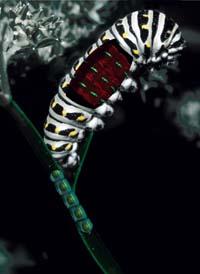
Common sense provides basic rules. The first is the creation of simple structures, of which complex structures were developed. No one has seen developing a simpler structure but it is a very intelligent axiom.
And another axiom is used by those who investigate the evolution of life: the successful structures of life do not disappear. The species, yes, disappear --with internal success -. But the form of life does not; if some type of cell has been successful, today there are living beings that have this type of cells. What does not exist today has never existed.
Prokaryote and eukaryote
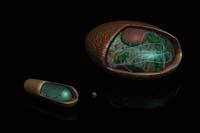
Currently there are only two types of cells: a simple cell, prokaryote and a complex cell, eukaryote. If searched around the world and among all living beings, there is no other type of cells, not even an intermediate between them. Therefore, the absence of intermediate cells is accepted. And, according to the axiom of complexity, the prokaryotic cell was first formed and from there the eukaryote was developed.
The first, prokaryote, is a successful cell. It is the cell of bacteria, for example. It has all the basic equipment necessary for survival: proteins for basic chemical reactions, structures that make them, ribosomes, and the information that ribosomes need to make proteins encoded in the DNA molecule. All these ingredients are free within the prokaryotic cell, in a basic broth of life. In addition, it has tools of absorption of food from the external medium in the cell wall.
What else would you need? Nothing. This structure has worked since the beginning of life and has had a great success. Among them were many species, a great biodiversity. And in the first 2,000 million years of life history there were only prokaryotes.
But that changed. About 1,500 million years ago a eukaryotic cell, much more complex, appeared. The most important difference with prokaryote is that it has a den of the genetic code, a kind of “container” inside the cell. This container is called nucleus, and the very existence of the nucleus gives name to the cell: eukarioto means nucleus and prokarioto means nucleus.
Complexity has brought advantages to eukaryote. The advantage of being a nucleus is that the cell can manage much more genome - that is, it can have much more genetic information - than if the DNA is free within the cell. In fact, prokaryotes have a single chromosome and several eukaryotes. And it is not just a matter of the core. Eukaryotes have structures called microtubules, in the form of a cane, which give shape to the entire cell. This has also contributed to the eukaryotic cell, which can have many more forms than simple prokaryote.
Birth of the eukaryote
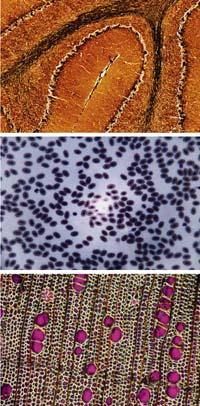
Microbiologists do not agree. The classic explanation is that some prokaryotes, through simple random mutations, were gradually changing. It changes and changes to form a eukaryotic cell, which after the success of the eukaryote, evolves. This is, to a large extent, an explanation according to Darwin's theory of natural selection. But many experts do not admit that it is possible to randomly create the complexity of eukaryotes. They propose another explanation: the eukaryotic cell is a combination of several prokaryotes. Those prokaryotes who lived in symbiosis, each performing one of their functions, formed a complex cell within a single membrane. This theory was proposed by the American Lynn Margulis, who revolutionized the evolutionary world.
However, neither one explanation nor the other has been fully demonstrated. Some genetic analyses serve to reinforce one and the other explanation, but the debate is not completely closed.
American biologist Carl Woese studied the rRNA 16S gene in numerous microorganisms. It is one of the genes necessary for the formation of ribosomes, all alive. That is why it serves to analyze the evolution, the more similar it has occurred in two species, the closer they are both in the genealogical tree. In view of the results of the research, Woese concluded that the first eukaryote arose from the evolution of an archeus, a simple microorganism very similar to bacteria. And that this evolution occurred through small mutations.

To study Margulis's explanation, genetics are also being used: if eukaryote is a combination of several prokaryotes, genomes of all these prokaryotes should be present in the eukaryote, even outside the nucleus (or at least remnants of genomes). It has not yet been fully achieved to find them, among other things because it is very difficult to extract some genomes. However, Margulis is convinced that the first eukaryote emerged from the symbiosis between the archaeologist of the genus Thermoplasma and an expiratory. The expiratory is an elongated helicoidal bacterium whose main contribution would be the administration of microtubules to the eukaryote, structures that give shape to the entire cell. Later, this first eukaryote would incorporate another bacterium for the production of mitochondria, which produces eukaryote energy and, in the case of plants, another photosynthetic bacterium that became chloroplasts.
Symbiosis Symbiosis
The revolutionary idea of the second exhibition is to take into account the symbiosis. Successful living beings can join together to create a more complex life. In Margulis's explanation, in addition, eukaryotic cells can adopt special forms thanks to microtubules, in addition to managing very large genetic codes thanks to the nucleus. The combination of both features allows the creation of very new organisms. The symbiosis greatly increases biodiversity.
The first eukaryotes are protists, like today's paramecios. Amoebas are an example of the following that emerged with the inclusion of mitochondria. All of them are monocellular, microscopic living beings (such as bacteria and arches). However, evolution was not there, with the union of many cells great living beings appeared. Animals, plants and fungi appeared.
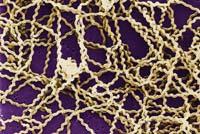
Specialization Specialization
Cell sets have a great advantage: each cell can specialize, it is not required to do everything necessary to live. And, therefore, it can do much more than the essentials to survive.
Look at yourself. You are a large and complex animal. You have organs. The heart, for example, pumps blood without worrying about metabolism. The liver is responsible for the metabolism without worrying about blood pumping. Blood will come to him as the heart receives food. Each organ fulfills a function and among all manage to survive an entire complex body. Furthermore, the eyes, for example, do not have a basic responsibility for life; in the eye, eukaryotic cells are specialized in capturing the light of the environment and turning it into an electrical signal to send it to the brain.
The brain itself is a very special example of specialization. You are using these lines to read them and that is not a basic function of life. You can also survive without reading it. But reading gives you new possibilities of living.
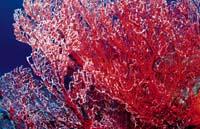
All this is an example of the functioning of a complex animal, the human being. Other animals have other specializations. And the other plants and fungi, each different. However, they are all new infrastructures that have increased the planet's biodiversity, specialized biological infrastructures. And all are a consequence of the appearance of the eukaryotic cell.
The importance of prokaryote
There is no doubt that the eukaryotic cell and specialization allowed to increase biodiversity. But at this point we cannot rule out prokaryote. There are two main reasons to talk about prokaryotes.
On the one hand, from the point of view of its own biodiversity, eukaryote has not so far been more fruitful than prokaryote. Most of the existing biodiversity is microorganisms, mostly prokaryotes. Things like they are.
In fact, the following article speaks and explains the history of biodiversity. It can be speculated if in the future the biodiversity generated by the eukaryotic cell will be greater than that of the prokaryotes. But for the moment it is not, and surely it will never be, since prokaryotes are creating more new species than eukaryotes. The adaptation of the prokaryotic cell to the environment has been much longer.

In short, symbiosis seems to be the main choice of biodiversity. Initially they were prokaryotes and only 2,000 million years lived on Earth. Then, suddenly, eukaryotes emerged. It is about to see if, after another 2 billion years, another type of cells will be created. However, it does not seem that this happens. Instead, symbiosis can once again be a trick to increase biodiversity.
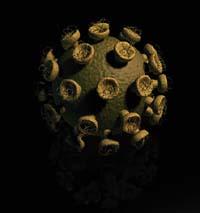
Buletina
Bidali zure helbide elektronikoa eta jaso asteroko buletina zure sarrera-ontzian











